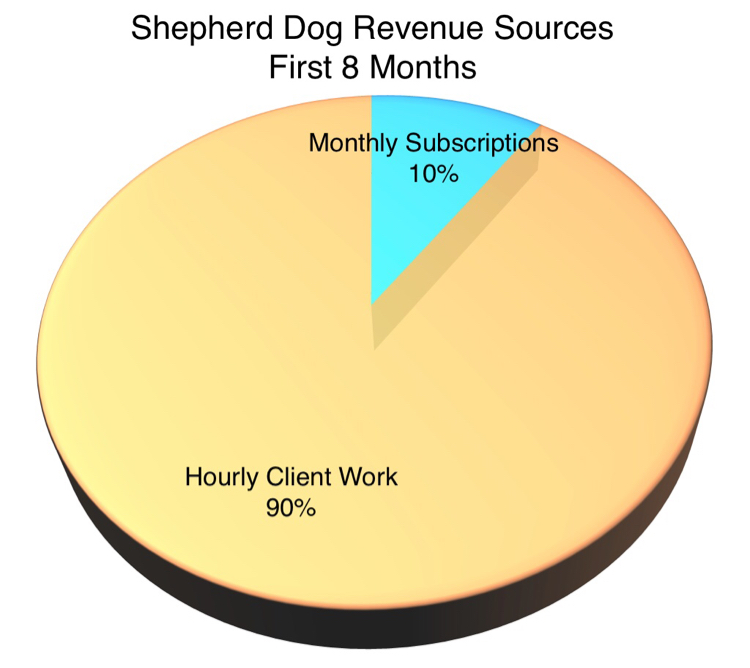Tent Poles And Stool Legs
Apple has repeatedly used an analogy of tent poles to features in new products they are introducing. The analogy is that these features lift up the product and both make it what it is and allow for it to stand on its own. A similar analogy is to legs on a stool. The stool’s legs ensure that it can stand up and support weight.
Today we’re going to use these analogies to talk about how Shepherd Dog makes money. I intentionally avoided the word “revenue” there so you didn’t yawn immediately and hopefully I can keep it light and interesting.
From when we started at the beginning of this past February until now, we’ve only had two legs on our stool for making money – hourly client work and monthly support subscriptions. I bet you can picture in your head what that stool looks like. It is pretty wobbly and tough to balance, but with only two people it isn’t so bad. But now picture that one of the legs is much longer than the other, since 90% of our money over the last 8 months has come from hourly client work. That makes the stool even more imbalanced.
Today we’re happy to share our next step in balancing this stool. In the next couple of weeks we will be launching our first non-client-work app for sale in the iOS App Store. Now don’t get too excited because this is a niche app and probably isn’t right for you. It isn’t right for most people, but we hope it can be really useful for the right people.
Since the app has a small market, we don’t expect sales to be huge (although we’d love to be pleasantly surprised!) but instead we hope for another small leg that will help steady our stool. Over time, we hope to lengthen our two short legs with more apps and subscription services, which will give us safety during the slower seasons for client work.
We’ll be submitting our first app to Apple for review today or tomorrow, so look for a blog post about it with all the details in the next couple of weeks.

